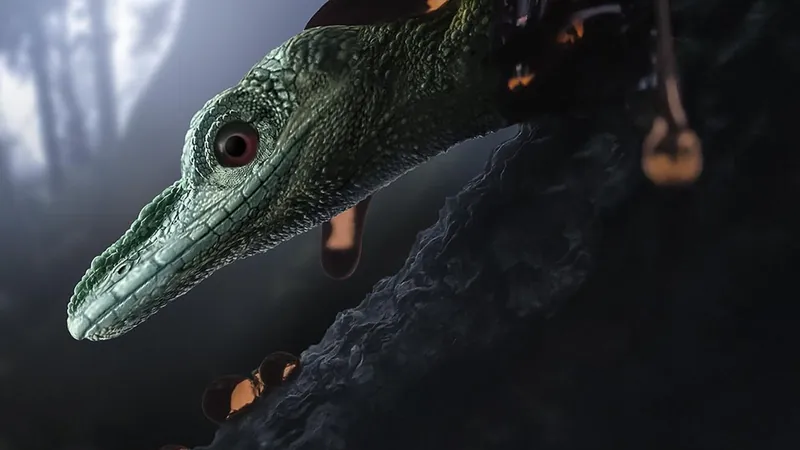
Meet the 100-Million-Year-Old 'Smallest Dinosaur' That Was as Tiny as a Hummingbird!
2025-04-29
Author: Jacob
An Astonishing Discovery in Burmese Amber
Imagine unearthing a time capsule that takes you straight back to a lush, tropical world of 100 million years ago! Burmese amber, hailing from Myanmar's Hukawng Valley, is just that, capturing an incredible array of organisms. This ancient treasure preserved everything from insects to fragments of dinosaurs, offering us a unique glimpse into the vibrant ecosystems of the mid-Cretaceous period.
A Miniature Skull Shakes Up Paleontology
In a stunning revelation back in March 2020, paleontologists unveiled a tiny skull encased in amber, measuring just over a centimeter in length. Dubbed Oculudentavis khaungraae, this prehistoric creature was heralded as the smallest known dinosaur, sporting needle-like teeth that suggested it was an agile insect hunter. However, further investigation raised eyebrows and tossed a wrench into our understanding of dinosaur evolution.
Life of Oculudentavis: Tiny Hunter of the Cretaceous Canopy
Oculudentavis, a genus boasting two species, thrived in a humid mid-Cretaceous archipelago. While its full body length remains a mystery, its skull rivals that of a bee hummingbird. The anatomical features of O. khaungraae—a long snout and large eye sockets—initially pointed towards avian characteristics, yet detailed analysis revealed it was more akin to lizards than birds.
From Dinosaur to Lizard: A Classification Rollercoaster
Initially touted as an avialan dinosaur due to its bird-like skull, Oculudentavis faced a reclassification after a comprehensive 2021 study revealed crucial lizard-like traits. The discovery of teeth fused to the jawbone and the absence of certain skull bones indicated it was an early lizard relative. This shift showcases the wonders of convergent evolution, where similar features develop in different lineages due to similar needs.
The Great Mystery of Oculudentavis
Even with its reclassification, Oculudentavis's exact evolutionary position remains ambiguous. Phylogenetic studies yield divergent results, suggesting it could be at the root of squamates or distantly related to modern lizards and snakes. Until more fossils surface, the nature of this tiny creature will continue to mystify scientists.
Island Effects: How Myanmar Shaped Oculudentavis
The Hukawng Valley's amber, formed on an isolated island, contributes to understanding Oculudentavis's rarity and size. Island ecosystems often lead to dwarfism—a boon for survival amid limited resources and reduced predation. Here, tiny creatures like Oculudentavis evolved unique adaptations, showcasing an extraordinary example of how isolation influences evolution.
The Future of Oculudentavis Research
As researchers continue to unearth amber, the possibility of discovering more complete specimens or additional species looms large. Each new find could crucially inform our understanding of this hummingbird-sized 'dinosaur' and its place in the vast tree of life. The saga of Oculudentavis is far from over!









 Brasil (PT)
Brasil (PT)
 Canada (EN)
Canada (EN)
 Chile (ES)
Chile (ES)
 Česko (CS)
Česko (CS)
 대한민국 (KO)
대한민국 (KO)
 España (ES)
España (ES)
 France (FR)
France (FR)
 Hong Kong (EN)
Hong Kong (EN)
 Italia (IT)
Italia (IT)
 日本 (JA)
日本 (JA)
 Magyarország (HU)
Magyarország (HU)
 Norge (NO)
Norge (NO)
 Polska (PL)
Polska (PL)
 Schweiz (DE)
Schweiz (DE)
 Singapore (EN)
Singapore (EN)
 Sverige (SV)
Sverige (SV)
 Suomi (FI)
Suomi (FI)
 Türkiye (TR)
Türkiye (TR)
 الإمارات العربية المتحدة (AR)
الإمارات العربية المتحدة (AR)